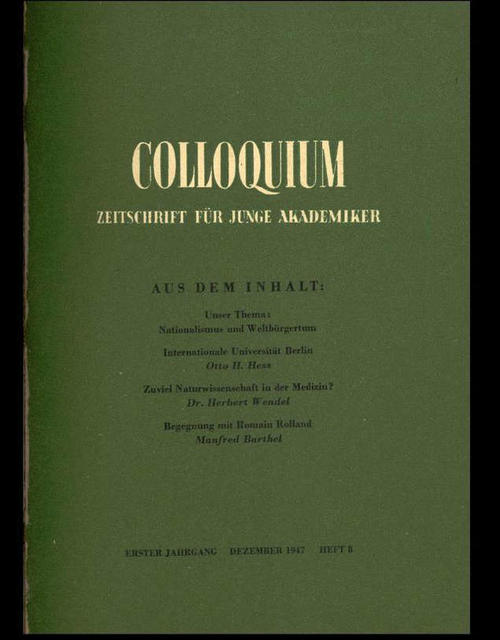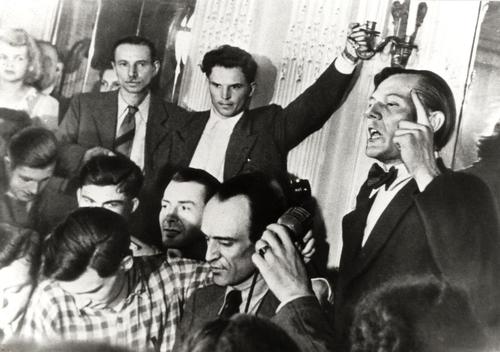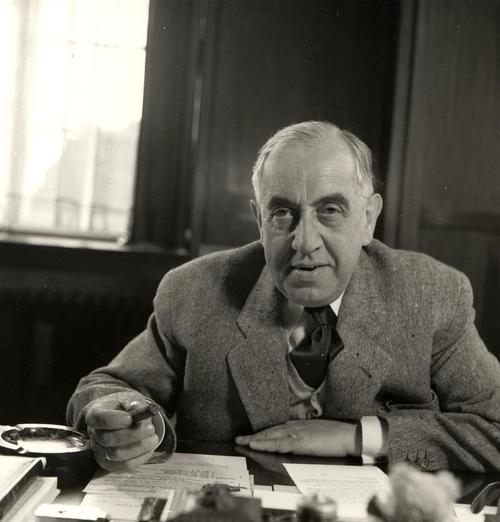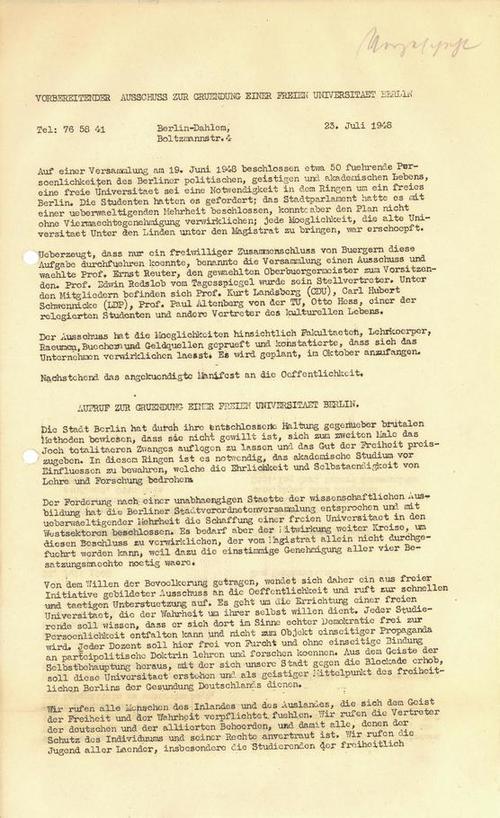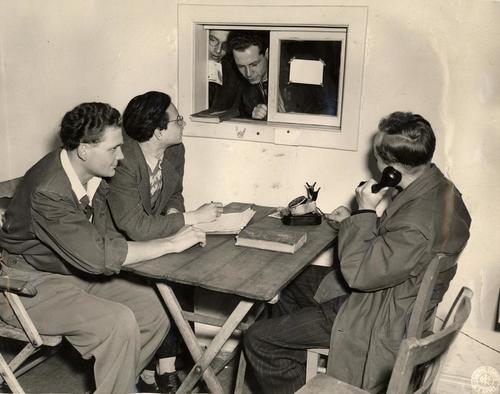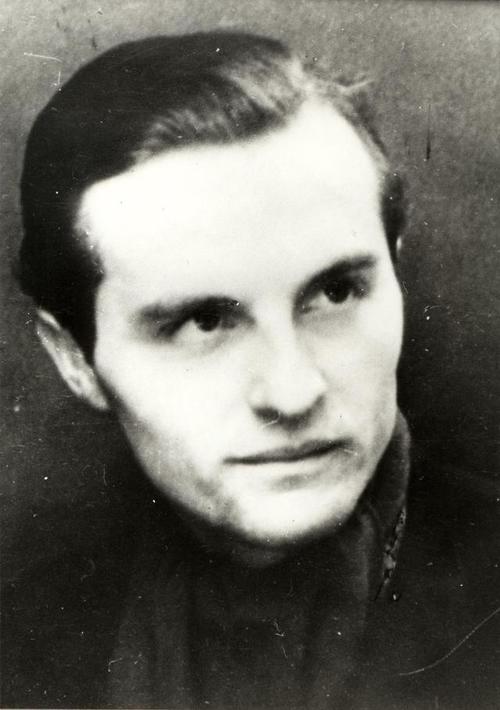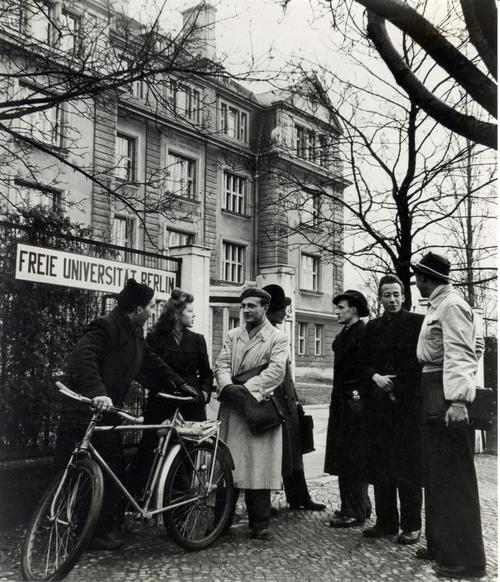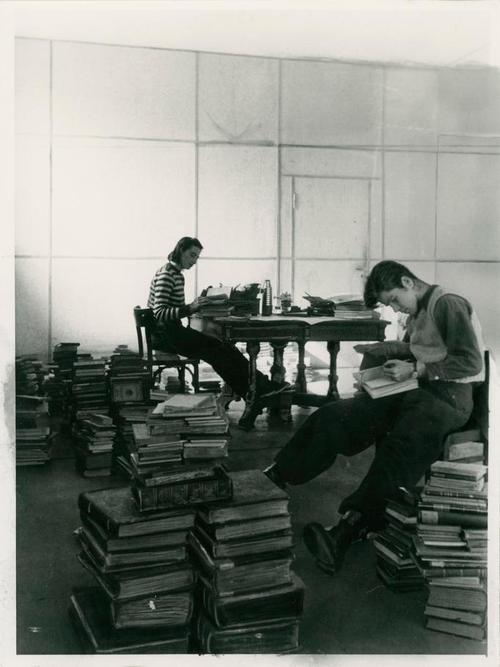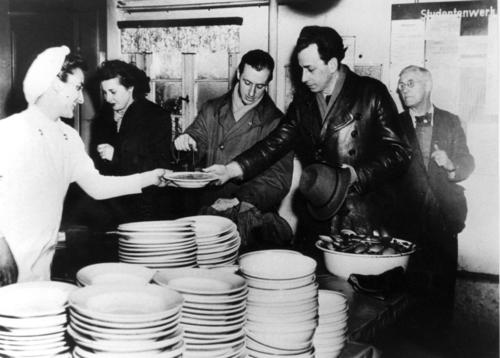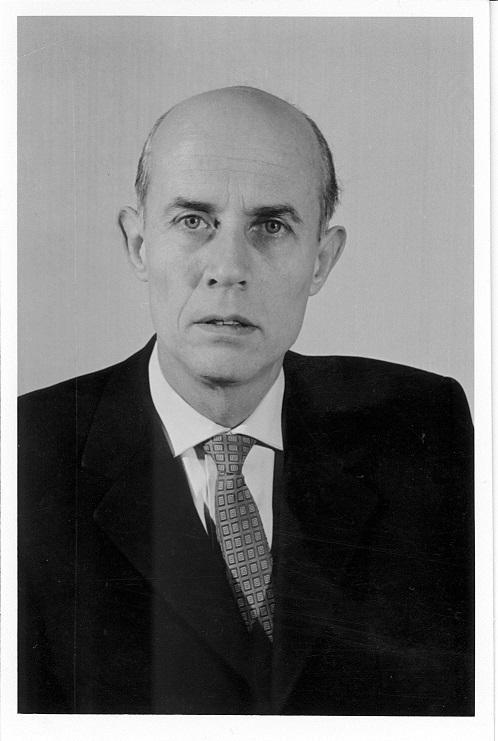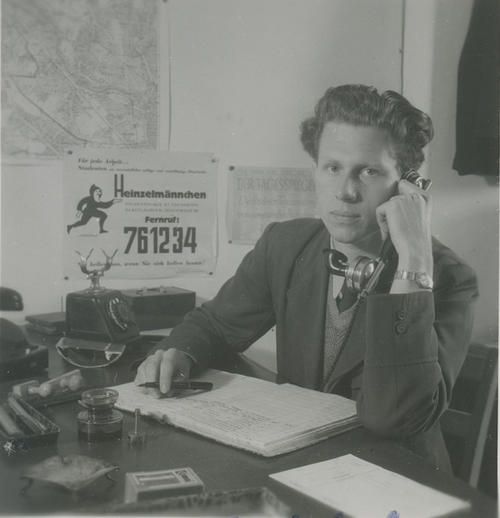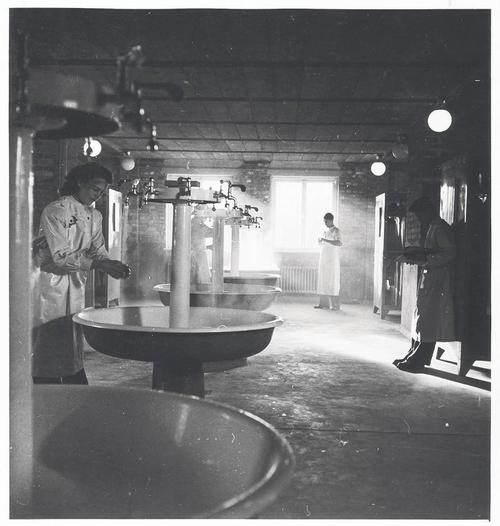The 1940s
December 1947
The history of Freie Universität Berlin dates back to 1947, when the first public demand for a new university was published in a student journal. Otto Hess, who was studying medicine at the main university in Berlin, which happened to be situated in the eastern, Soviet-occupied sector of the city, was the author of an article demanding an international university in Berlin. It appeared in the student periodical “Colloquium,” which had been licensed by the American occupation authorities as of May 1947.
April 1948
The students Otto Hess, Joachim Schwarz, and Otto Stolz, editor-in-chief of “Colloquium,” were expelled from the main university in Berlin (see photo) by the president of the Soviet-controlled German Central Administration for Education (Deutsche Zentralverwaltung für Volksbildung), Paul Wandel (a member of the SED party).
April 23, 1948
About 2,000 students protested in support of Otto Hess, Joachim Schwarz, and Otto Stolz in front of the Hotel Esplanade at Potsdamer Platz. They demanded the founding of a new, free university. The rector of the main Berlin university, Hermann Dersch, justified expelling them as he said their journalistic work was “an affront to decency and dignity.”
April to June 1948
A committee set up by the American military governor General Lucius D. Clay supported the “feasibility of the establishment of a German university in the US sector of Berlin.” The Tagesspiegel newspaper appealed Germany-wide for the establishment of a supporting foundation. A preparatory committee consisting of professors, lecturers, politicians, administrative employees, and students was set up. They included the Governing Mayor of Berlin, Ernst Reuter (see photo), the art historian and editor of the Tagesspiegel, Edwin Redslob, and medical student Otto Hess.
June 24, 1948
The American and British Allies bore the brunt of supplying the population of West Berliners with the most needed goods during the Berlin Airlift.
Image Credit: Fritz Eschen/Deutsche Fotothek
The Western Allied commanders of Berlin ordered the German mark (D-Mark) to be introduced in West Berlin, as it already had been four days earlier in the western zones of Germany. The Soviet occupation authorities then blocked the land routes used by the American, British, and French Allies between the western zones and West Berlin. From June 26, 1948, until May 12, 1949, the Americans and British took the lead in providing supplies to the population of West Berlin via an airlift. All told, in almost 200,000 flights, around 1.5 million tons of vital goods were transported to Berlin. Near the end of the airlift, a plane landed in Tempelhof, Gatow, or Tegel every two to three minutes.
July 23, 1948
The founding manifesto of Freie Universität Berlin
Image Credit: Freie Universität Berlin / Universitätsarchiv
Publication of the “founding manifesto”: The preparatory committee asked the citizens of Berlin to support the founding of a free university. The new university was intended to become an independent location for academic education, where individuals “would be able to teach, study, and conduct research free of fear and without a one-sided commitment to any political doctrine.”
July 24, 1948
The main office in the building at Boltzmann Strasse 4
Image Credit: Freie Universität Berlin / Universitätsarchiv
The main office of Freie Universität opened in the building at Boltzmann Strasse 4. The building had belonged to the Kaiser Wilhelm Society until the end of World War II. Various individuals donated tables, chairs, and a typewriter as the first furnishings. During the first week 1,200 prospective students had signed up. By the time the official registration forms were ready on September 11, more than 3,000 prospective students had already signed up.
November 1948
On the first day of official enrollment, medical students whose last names began with A to K were allowed to register. Karol Kubicki (see photo) and his fellow student Helmut Coper tossed a coin to decide which one could enroll first. Karol Kubicki won and became the first student to enroll at Freie Universität Berlin.
November 5, 1948
Stanislaw Karol Kubicki was the first student to enroll at Freie Universität Berlin.
Image Credit: Stephan Töpper
The picture shows the first student to enroll at Freie Universität Berlin, Stanislaw Karol Kubicki, a medical student and later professor of neurology at Freie Universität, as he officially registered at the new university.
November 1948
Friedrich Meinecke left the old Berlin Universität Unter den Linden to join the new university in Dahlem. A highly regarded historian, he became the founding rector of Freie Universität, where he held office until the winter semester of 1949/1950.
Winter Semester in 1948/1949
Students in front of the first main building of Freie Universität at Boltzmann Strasse 3. Initially, 13 institutes of the Faculty of Philosophy were housed there, as well as a stationery store, a shoemaker’s workshop, a clothing distribution point, and several apartments for university employees.
December 4, 1948
The founding ceremony in the Titania Palast movie theater
Image Credit: Freie Universität Berlin / Universitätsarchiv
The founding ceremony was held in the Titania Palast, a movie theater in Steglitz, the largest hall available in the American sector at the time. Ernst Reuter gave the opening speech, and the speech by Rector Friedrich Meinecke, who was ill, was broadcast in the hall. Speeches were also given by Edwin Redslob, the executive vice president of the university, the student representative Heinz Rögner-Franke, the commander of the American sector Frank L. Howley, the acting mayor of Berlin Louise Schroeder, and as a representative of Princeton University and Yale University, the writer Thornton Wilder.
February 1949
Medical doctor Friedrich von Bergmann
Image Credit: Reinhard Friedrich / Freie Universität Berlin / Universitätsarchiv
Friedrich von Bergmann, a medical doctor, became the curator of Freie Universität, its first director of administration and finance. From 1945 to 1946, von Bergmann had been working for the health system in the Soviet occupation zone as the head of the division of science and training in their central administration . After that he was a freelancer for the Tagesspiegel daily newspaper, and later secretary of the preparatory founding committee for Freie Universität.
Freie Universität was able to use several buildings in Dahlem that had once been part of the former Kaiser Wilhelm Institute and the former Friedrich Wilhelm University, the predecessor of the Berlin University on Unter den Linden and today’s Humboldt-Universität.

